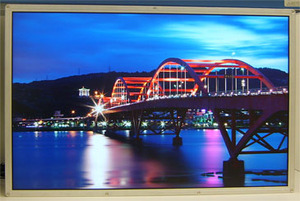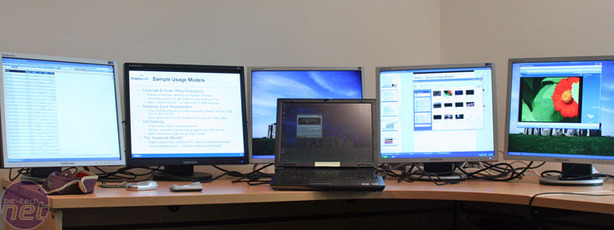
The Future:
With the widespread industry support, DisplayPort looks set to replace just about every major display interface that is in existence today. Previous display interfaces, such as VGA and DVI, will no longer be included on displays in the future if VESA has its way, as its vision is to have ultra-sleek displays with just a DisplayPort connector on the back.Instead, older standards will instead be supported via a dongle. Whether this is a good thing or not remains to be seen – the question is whether or not we need even thinner displays? After all, it’s not as if current LCDs take up massive amounts of space on the desktop like the massive back-breaking CRTs of yesteryear.
That side of DisplayPort seems more like a means to making displays more fashionable than they currently are. From that perspective, you could say it’s a good thing for the industry as more attractive display designs could possibly drive PCs into more homes.
One thing that’s interesting about the DisplayPort architecture is that because the original data is converted into micro packets, there is the provision to support more than one audio or video stream, along with other data types, over a single cable. Therefore, we can expect to see things like Picture-in-Picture or Split Screen streams over a single cable.
VESA says that the current specification would allow for up to six 1080i streams or three 1080p streams over a single connector, which would enable daisy chaining in the future. Speaking of which, there’s something that might snuff out some of DisplayPort’s hopes of making it into the bigtime. That something is USB, as Samsung recently demonstrated five displays running at 1600x1200/60Hz with 8bpc... off of a single USB port.
 The details on this are a little light at the moment, but rest assured that Riyad over at TrustedReviews is currently working on an article covering this particular technology in a little more depth. With that said though, I don't think the technology is going to be the ideal solution for gaming or watching HD movies, as it’s using a selective compression technique that works well when there isn’t a lot of information constantly changing on the display (i.e. when you’re in Windows).
The details on this are a little light at the moment, but rest assured that Riyad over at TrustedReviews is currently working on an article covering this particular technology in a little more depth. With that said though, I don't think the technology is going to be the ideal solution for gaming or watching HD movies, as it’s using a selective compression technique that works well when there isn’t a lot of information constantly changing on the display (i.e. when you’re in Windows).USB-powered monitors are be a great solution for those of us with ultra portable notebooks, as space often comes at a premium and there’s also the fact that these notebooks will have USB indefinitely. But regardless of this, DisplayPort is going to be a cornerstone of the industry moving forwards and it’s good to see that there’s a bucket load of support from the industry behind it.
With the backwards compatibility problems taken into consideration at this early stage, it would appear that DisplayPort isn’t likely to suffer from poor adoption rates and given that VESA’s intention is to continue to develop the interface over time, we could see some cool stuff popping up in display technology over the next few years. I, for one, am really looking forward to being able to daisy chain monitors together at high resolutions.

MSI MPG Velox 100R Chassis Review
October 14 2021 | 15:04









Want to comment? Please log in.